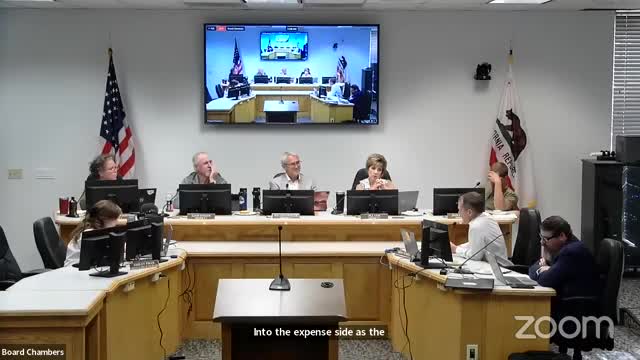Budget Crisis Sparks Heated Debate Over Fee Waivers
August 07, 2024 | Trinity County, California
This article was created by AI summarizing key points discussed. AI makes mistakes, so for full details and context, please refer to the video of the full meeting. Please report any errors so we can fix them. Report an error »

In a recent government meeting, board members engaged in a heated discussion regarding a proposed fee waiver for a local nonprofit organization. The organization, identified as a 501(c)(3), relies on community donations to sustain its operations. A board member emphasized the importance of community support, suggesting that if 80 individuals each donated $20, it would significantly contribute to the organization's revenue.
The conversation quickly shifted to the financial realities facing the county, with several members expressing concerns about the upcoming budget season. One supervisor highlighted the need for a balanced approach, acknowledging the emotional appeal of supporting local services while grappling with the harsh fiscal constraints the county is facing. The board debated whether to waive 50% or the entire fee of $1,600, with arguments made for both sides.
Supporters of the full waiver argued that the nonprofit provides essential services that the county cannot replicate, suggesting that the investment would ultimately save the county money in the long run. They pointed out that funding such organizations could prevent larger costs associated with filling service gaps.
Conversely, other board members cautioned against setting a precedent for fee waivers, fearing that cumulative requests could lead to significant financial strain. They stressed the importance of prioritizing essential services that the county is mandated to provide, such as law enforcement and public safety, which are currently underfunded.
As the discussion unfolded, it became clear that the board members were acutely aware of the difficult decisions ahead. They acknowledged the emotional weight of their choices, recognizing that each dollar allocated could impact staffing and essential services. Ultimately, the board voted to waive 50% of the fee, a decision framed as a compromise between community support and fiscal responsibility. The meeting underscored the ongoing challenges local governments face in balancing community needs with budgetary constraints.
The conversation quickly shifted to the financial realities facing the county, with several members expressing concerns about the upcoming budget season. One supervisor highlighted the need for a balanced approach, acknowledging the emotional appeal of supporting local services while grappling with the harsh fiscal constraints the county is facing. The board debated whether to waive 50% or the entire fee of $1,600, with arguments made for both sides.
Supporters of the full waiver argued that the nonprofit provides essential services that the county cannot replicate, suggesting that the investment would ultimately save the county money in the long run. They pointed out that funding such organizations could prevent larger costs associated with filling service gaps.
Conversely, other board members cautioned against setting a precedent for fee waivers, fearing that cumulative requests could lead to significant financial strain. They stressed the importance of prioritizing essential services that the county is mandated to provide, such as law enforcement and public safety, which are currently underfunded.
As the discussion unfolded, it became clear that the board members were acutely aware of the difficult decisions ahead. They acknowledged the emotional weight of their choices, recognizing that each dollar allocated could impact staffing and essential services. Ultimately, the board voted to waive 50% of the fee, a decision framed as a compromise between community support and fiscal responsibility. The meeting underscored the ongoing challenges local governments face in balancing community needs with budgetary constraints.
View full meeting
This article is based on a recent meeting—watch the full video and explore the complete transcript for deeper insights into the discussion.
View full meeting
